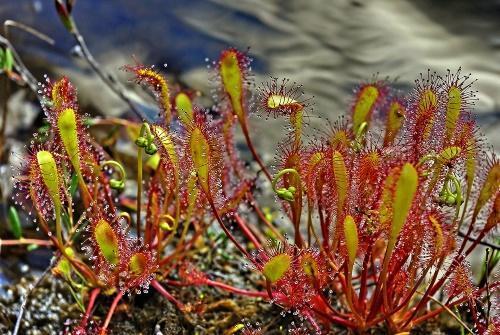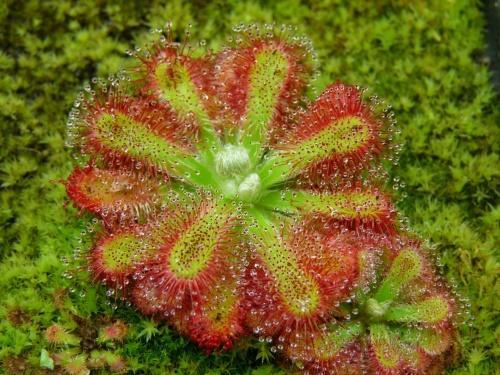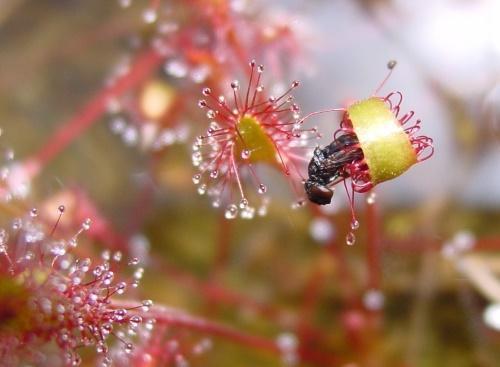Where the sundew lives: getting acquainted with predatory plants
 Sundew is the general name of the genus, which includes perennial grasses of the sundew family. Their feature is carnivorousness. Useful substances for plant development are obtained not from the soil, but by feeding on live insects. Such a diet is primarily due to the habitat of the sundew in natural conditions. What does this vegetable look like? predator, and in what places does it grow?
Sundew is the general name of the genus, which includes perennial grasses of the sundew family. Their feature is carnivorousness. Useful substances for plant development are obtained not from the soil, but by feeding on live insects. Such a diet is primarily due to the habitat of the sundew in natural conditions. What does this vegetable look like? predator, and in what places does it grow?
Description of the plant

The sundew folds leaves only when living creatures sit on them. Falling drops of rain or foliage will not cause this effect.

The sundews not only have original decorative leaves, but also bloom beautifully. All summer long, tall flower stalks rise above the outlet, protecting pollinating insects from accidentally entering the predator's menu. Inflorescences are small, with 5 petals, mostly white or pink in color.
Sundews are the most common in the vastness of our homeland:
- round-leaved;
- obovate;
- long-leaved;
- intermediate.
Where does the sundew live?
 Probably, the sundew can be called one of the most unpretentious crops growing in their natural environment. Even more, she feels great where others would have died long ago. All the green predator needs is wetlands, diffused light and food in the form of insects.
Probably, the sundew can be called one of the most unpretentious crops growing in their natural environment. Even more, she feels great where others would have died long ago. All the green predator needs is wetlands, diffused light and food in the form of insects.
Dewdrop can be found everywhere, perhaps, except for the southernmost latitudes of our planet, because their hot climate does not suit the plant. It lives mainly in peat and sphagnum bogs, less often on moist sandy soils. On the territory of our homeland, the predator grows in the Far East, Siberia and the European part of the country. Due to the drainage of swamps in some areas, it is included in the Red Book.